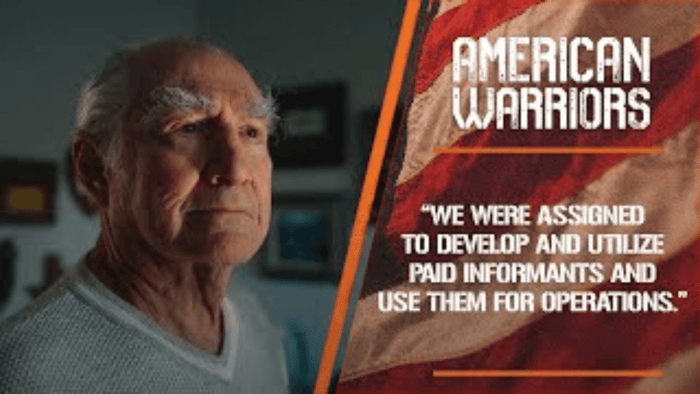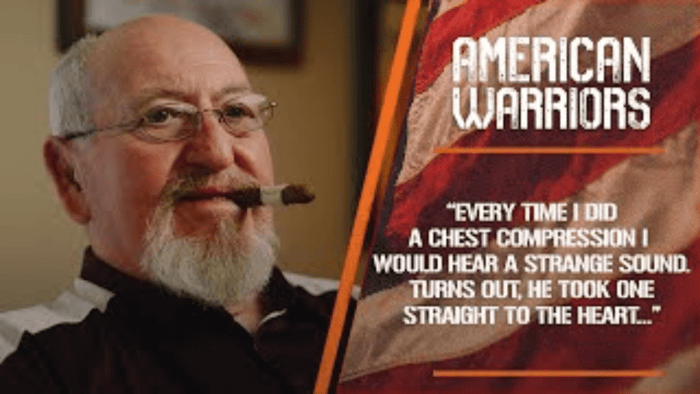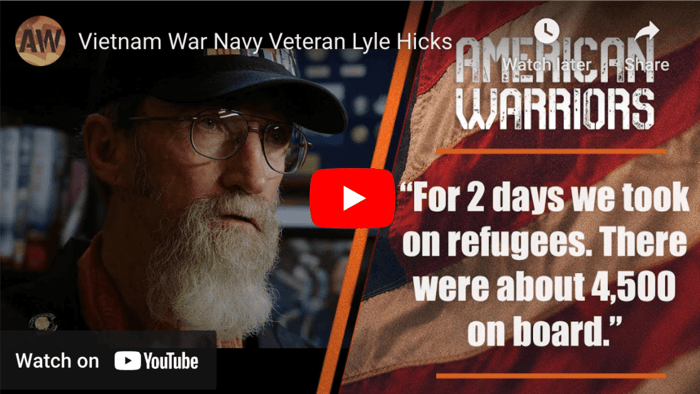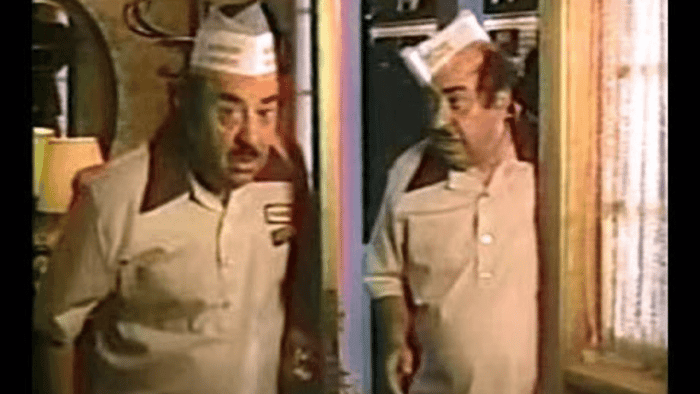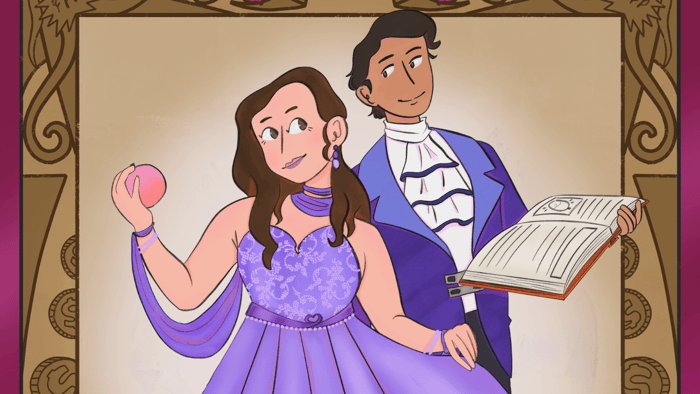An American Warriors Production - Al Santoro | Vietnam Intelligence Officer
Introduction
This document is an interview with Al Santoro, a Vietnam War veteran and former naval intelligence liaison officer for the Nilo program. In the interview, Al Santoro discusses his experiences during the war, including his transition from being a fighter pilot to an intelligence officer, his role in the Nilo program, and the impact that the war had on his life. The interview also delves into the significance of reconnaissance flights in gathering intelligence and the personal experiences of Al Santoro during his time in Vietnam.
Lesson Plan
The feature video is a 13 minute and 22 second interview with Al Santoro where he recounts his experiences during the Vietnam War. The video provides an in-depth look at his journey from being a fighter pilot to a naval intelligence liaison officer for the Nilo program. It also highlights some of the challenges he faced and the impact that the war had on his life.
Objectives:
- To learn about the personal experiences of Al Santoro during the Vietnam War
- To understand the role of a naval intelligence liaison officer for Nilo program
- To appreciate the significance of reconnaissance flights in gathering intelligence
- To recognize the impact of the Vietnam War on Al Santoro's life
Group Discussion Questions:
- Why did Al Santoro join the Navy and become a fighter pilot?
- Why did he transition to being an intelligence officer?
- How did Al Santoro contribute to the Nilo program?
- What was the most gratifying experience of Al Santoro's career?
- How did the Vietnam War impact Al Santoro's life?
Feature Film
Transcripts
(00:29)
Our vietnam was never in the front of my memory. I was naive about current events. I didn't really know what was going on. And if you said vietnam to me, I wouldn't know what you were talking about. Thing that intervened, forced me to be in the military was actually the vietnam war.
(00:50)
And that's where the story begins. You you 1966 christmas vacation. December. I'm home. I'm enjoying being back with the family. And there on the mantle is a notice from the draft board saying, we understand that you'll be graduating, and that will be the end of your student deferment, and you'll be reclassified one a.
(01:20)
I started frantically calling recruiters. The only recruiter that answered the phone was a naval aviation recruiter in andrews air force base. So I hustled over there, got interviewed, took a few tests, and went back to school on Monday morning.
(01:37)
The reason I chose the navy, because they were the only ones open on that Sunday afternoon. You. This term, vietnam started bubbling up in the back of my mind that that's where I was going to probably end up.
(01:54)
That's when I started thinking, I'm sure there's another part of the services that I can join that wouldn't immediately send me to Vietnam. So I joined Naval Aviation. I'm going to be a fighter pilot.
(02:09)
There are ten or maybe twelve flights with the instructor in the back seat. And after that you were supposed to solo. Well, I threw up on every one of my flights. So when it came time to solo, the Navy says, nah, Santoro, you can't fly our airplane with your head in a barf bag, but you can throw up all you want in the backseat as the navigator.
(02:36)
So I declined to do that, and they dropped me from the flight program and sent me to Washington, DC. And that's where I transitioned from ex pilot to intelligence officer. The special security officer came to visit with me and said, al, the Navy is considering you for a hazardous duty.
(03:05)
And I said, hazardous duty. But what about my clearances? He kind of grinned and smiled at me and said, you don't know anything. So two months later, I have orders to Vietnam. We arrive at Thompson Air Base and got on a helo and reported for duty at Gokong Province.
(03:36)
And I was going to be a naval intelligence liaison officer for Nilo. Program. So the program was developed to have nilos on all the riverine and the coastal provinces that would collect intelligence and quickly disseminate that to the operating forces.
(04:00)
Part of my duties when I got there was to run agents, pay informants, gather intelligence of VC sightings, and to try to analyze the kinds of activity and the worthwhileness of whether the of the information.
(04:20)
And from that, I could plan to disseminate that to the operators. Another part of what I did was to fly visual reconnaissance, and the purpose of the reconnaissance was get familiarity of the area to identify areas of VC activity, transshipment points, and that sort of a thing.
An American Warriors Production - Al Santoro | Vietnam Intelligence Officer
(04:49)
I was not on a mountaintop being mortared. I was not being ambushed with patrol in the jungle. I was essentially on independent duty. My experiences were exhilarating, gratifying, and even enjoyable at times.
(05:10)
My favorite part of what I did was to fly reconnaissance. I flew with army one bird dogs. I flew in helicopters, huey s, and during one of my reconnaissance flights, I noticed that there soon be a crash site of an airplane.
(05:38)
So I got real curious about that. And found out that it was a navy, a four skyhawk and was off of the USS Taekondaroga. An old guy comes out and he happens to be an XVC. And he says, I know about that airplane.
(06:05)
Not only do to know about it, I helped shoot it down. And oh, by the way, I'll show you where we buried the pilot. We organized another operation, went into walking across the rice patty dikes and sure enough, the old Ice is right there.
(06:23)
And Graves registration team dug and they found the remains. Turns out that this was the pilot was shot down in 1966. We recovered his remains in 1971. He was a Lieutenant j. G. Pinnaker. And this old VC had told us that there were two aircraft in the flight and the first aircraft came in and dropped the bomb.
(06:57)
The second aircraft came in and whether it was a delayed explosion or if this second aircraft was too close to the first one, bomb exploded underneath his aircraft and he went down. So we were able to get him off the missing list and onto the wall.
An American Warriors Production - Al Santoro | Vietnam Intelligence Officer
(07:20)
That was the most gratifying part of my career. After six months, Nixon's Vietnamization program started to kick in. And I was transferred from Gokong to Namcan, and I was going to be dual hated as the Nilo and also the intelligence officer for the base.
(07:51)
Most of what I did was flying. In spite of being ejected from the Navy flight program, I flew almost every day. In fact, act. I flew 117 missions. So when I left Vietnam, I had qualified for five air medals.
(08:20)
I left November 71, and because I had duty in Vietnam, I said, what the heck, I'm going to request duty in Hawaii. And I got it. So I was going to be at the Fleet Intelligence center of the Pacific, which was on Ford Island.
(08:38)
So after I was there for just about two years, there was talk in Paris, the peace talks about ending the Vietnam War. And sure enough, in early February, the peace accords were signed and the American detainees were being released from Hanoi.
(09:01)
I was assigned a returnee, and I debriefed him, and it was Lieutenant Commander Paul Galanti. And I was with that group with escorting. Lieutenant commander galanti went to the mainland, and I can remember someplace arriving someplace up north, and it was 02:00 A.m.
(09:24)
In the morning, and it was snowing, and it was cold, and you look out the window, and there's this group of people waving and selling braiding, the returnings or coming home again. I can remember some baby on some father's head.
(09:41)
So that was very exciting. And I finally delivered Paul gwanti to a base in Virginia, and he was met by his wife Phyllis. Coincidentally, at that time, paul and his wife Phyllis made the COVID of newsweek magazine.
(09:59)
Kind of celebrated their return. The returnees were always smiling. They were so happy to be back. Most of my career was in the pacific. I had spent 20 years and one week in the navy. When I was deployed to Vietnam, the navy issued me a camera, and I was supposed to take pictures for all my reconnaissance, so I just took pictures of everything.
(10:43)
Here's my uniform for flying, rapper hat, helmet, flight suit. Here's pictures of the a four. Here's the operation that we went in. This is a person from the graves registration. Here's what they dug out.
(11:04)
These are the remains of. This is the name of the pilot that we recovered. This is an authentic VC flag that they operators recovered on one of the operations based on the intelligence that I had given them.
(11:47)
When you're in the military, you know, you're you're they say to you and, you know, sprout where you're planted, you know, grow where you're planted. And so during that 20 years, there's highlights and low lights and no lights.
(12:03)
If I hadn't joined the Navy, I'd probably be digging ditches back in Virginia. So I'm very happy to have found some structures, found some way to establish something that I might be good at and to make a decent living at.
(12:18)
It very happy to have been able to do.
